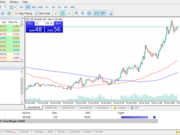What is ‘Warm Calling’
The solicitation of a potential customer with whom a sales representative or business has had prior contact. Warm calling refers to a sales call, visit or email that is preceded by some sort of contact with the potential customer or prospect, such as a direct mail campaign, an introduction at a business event or a referral. It is the opposite of cold calling – the solicitation of prospects who were not anticipating such an interaction, with whom the sales representative or business has not had prior contact.
Explaining ‘Warm Calling’
Warm calling tends to be more personalized since the prior contact can be referenced or mentioned (such as “Hi Mrs. Jones, I saw you followed our company on Twitter” or “Hi Mr. Jones, we met last week at the ABC Conference”). The previous contact acts as an icebreaker for the follow-up warm call.
Warm calling and the use of more effective sales channels such as email, text message marketing and social media portals are considered to be more efficient and effective than cold calling in generating new leads. Modern social media portals – such as LinkedIn, Twitter and Facebook – also allow opportunities for potential clients to reach out indirectly or directly to businesses by posting comments on a blog, sharing an article with a peer or tweeting something that is of interest.
How to Prepare for Warm Calling
Before making warm calls, it is important to thoroughly research the potential customer and their needs. This includes looking at their past interactions with your company and gathering information about their industry and current business challenges.
It is also essential to have a clear understanding of your product or service and how it can solve the customer’s needs. Having a script or outline of key points to cover during the call can also be helpful.
Finally, make sure to set specific goals for the call, such as scheduling a follow-up meeting or securing a sale.
Tips for Successful Warm Calling
Here are a few tips to help you succeed in warm calling:
- Personalize the call: Using the prospect’s name and referencing their past interactions with your company can help establish a more personal connection.
- Be respectful of their time: Respect the prospect’s time by getting straight to the point and not taking up too much of their time.
- Be knowledgeable: Be prepared to answer any questions or concerns the prospect may have about your product or service.
- Offer value: In addition to discussing your product or service, offer valuable insights or resources that may be helpful to the prospect.
- Follow up: If the call does not result in a sale, make sure to follow up with the prospect and continue to nurture the relationship.
Further Reading
- The virtues and vices of equilibrium and the future of financial economics – onlinelibrary.wiley.com [PDF]
- China and the United States: between cold and warm peace – www.tandfonline.com [PDF]
- Keeping warm and staying well. Does home energy efficiency mediate the relationship between socio-economic status and the risk of poorer health? – www.tandfonline.com [PDF]


































